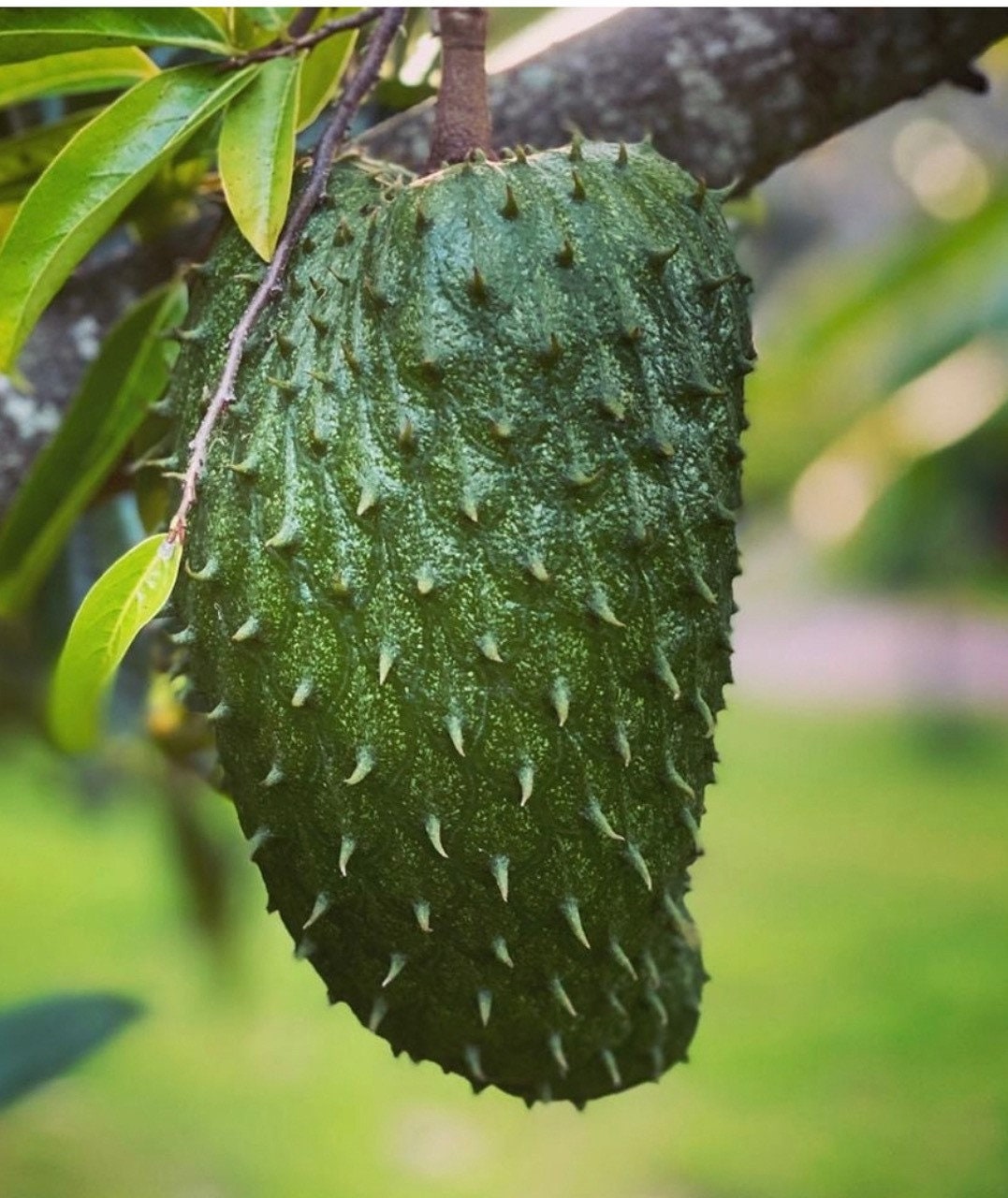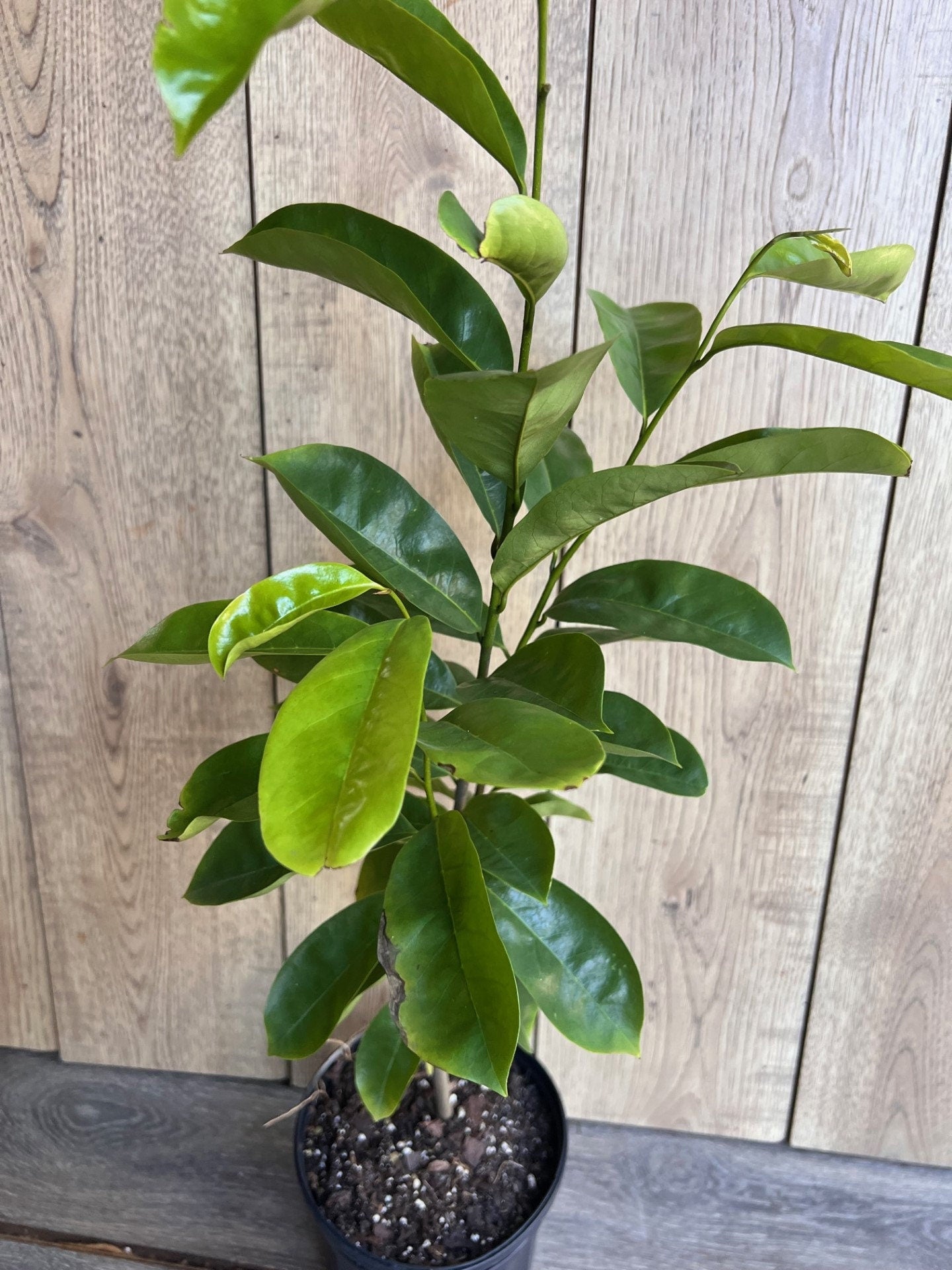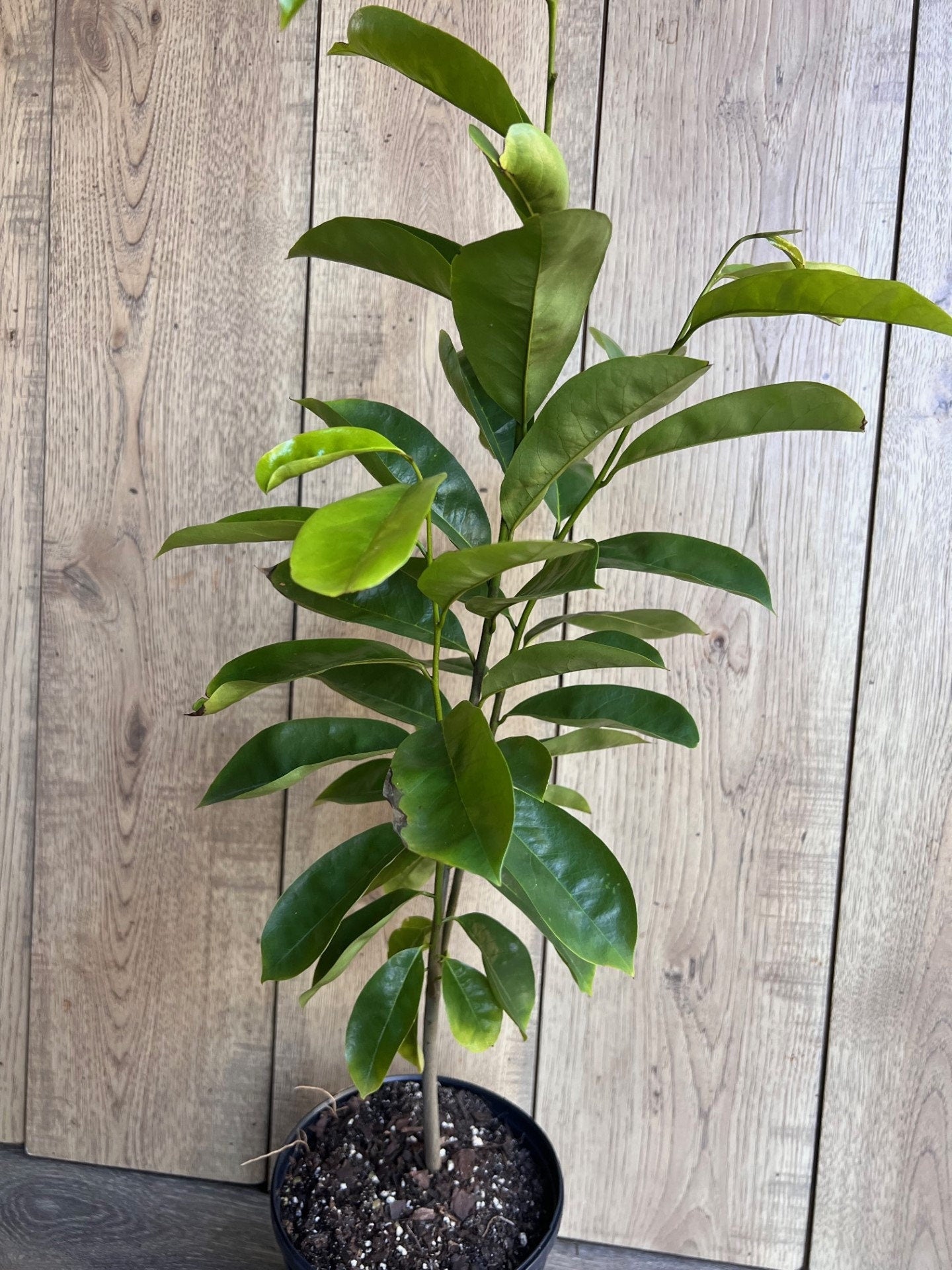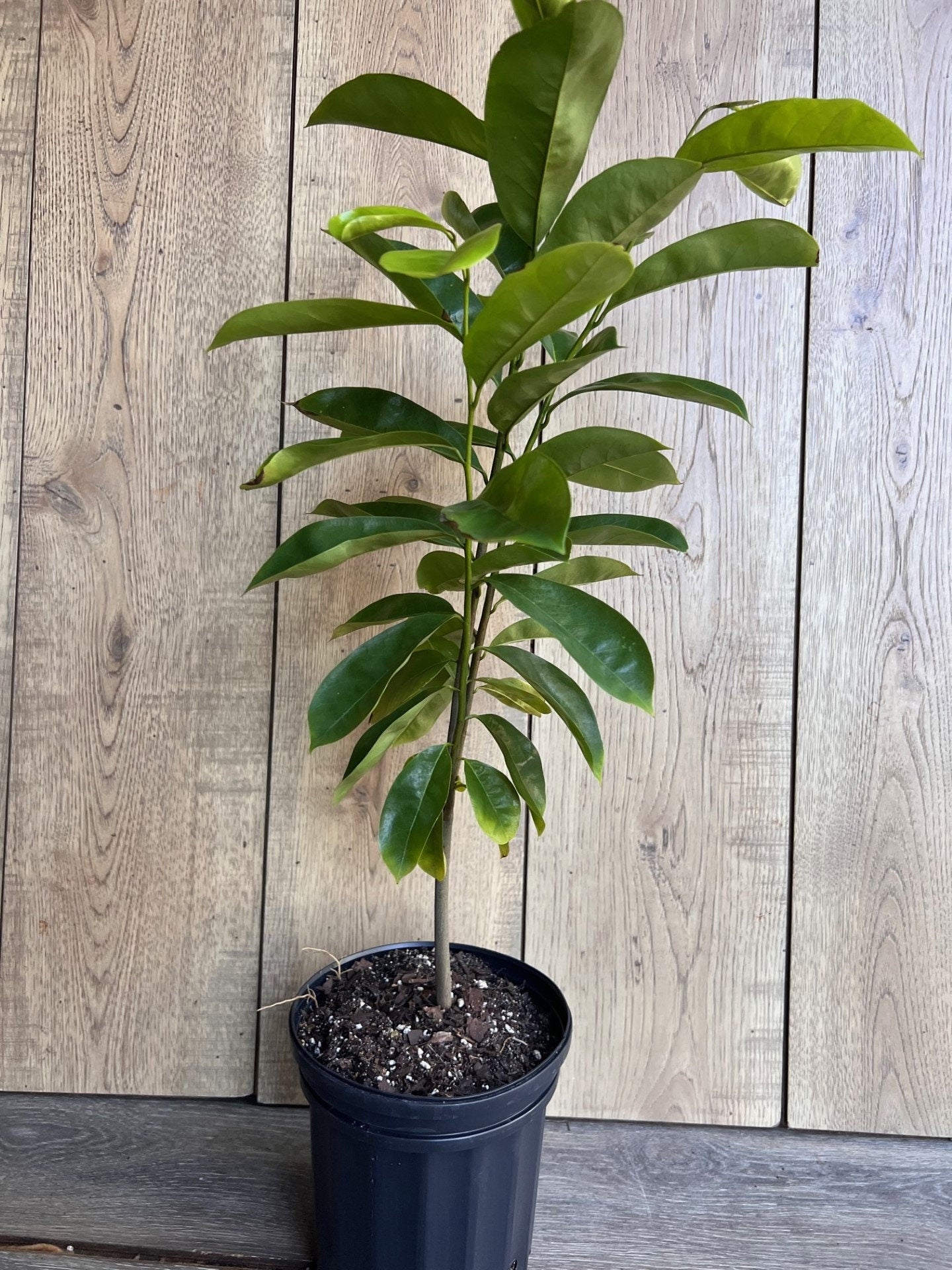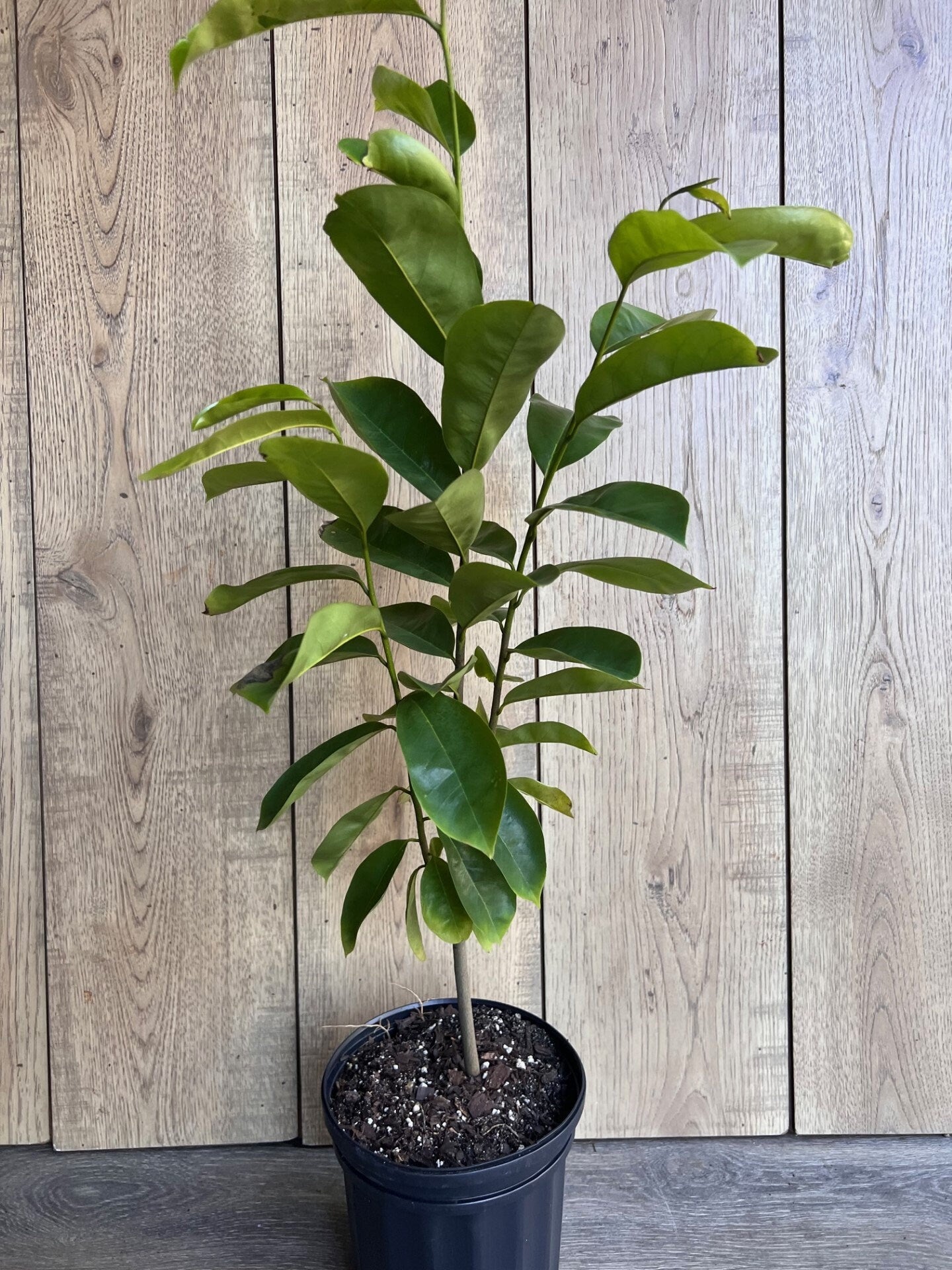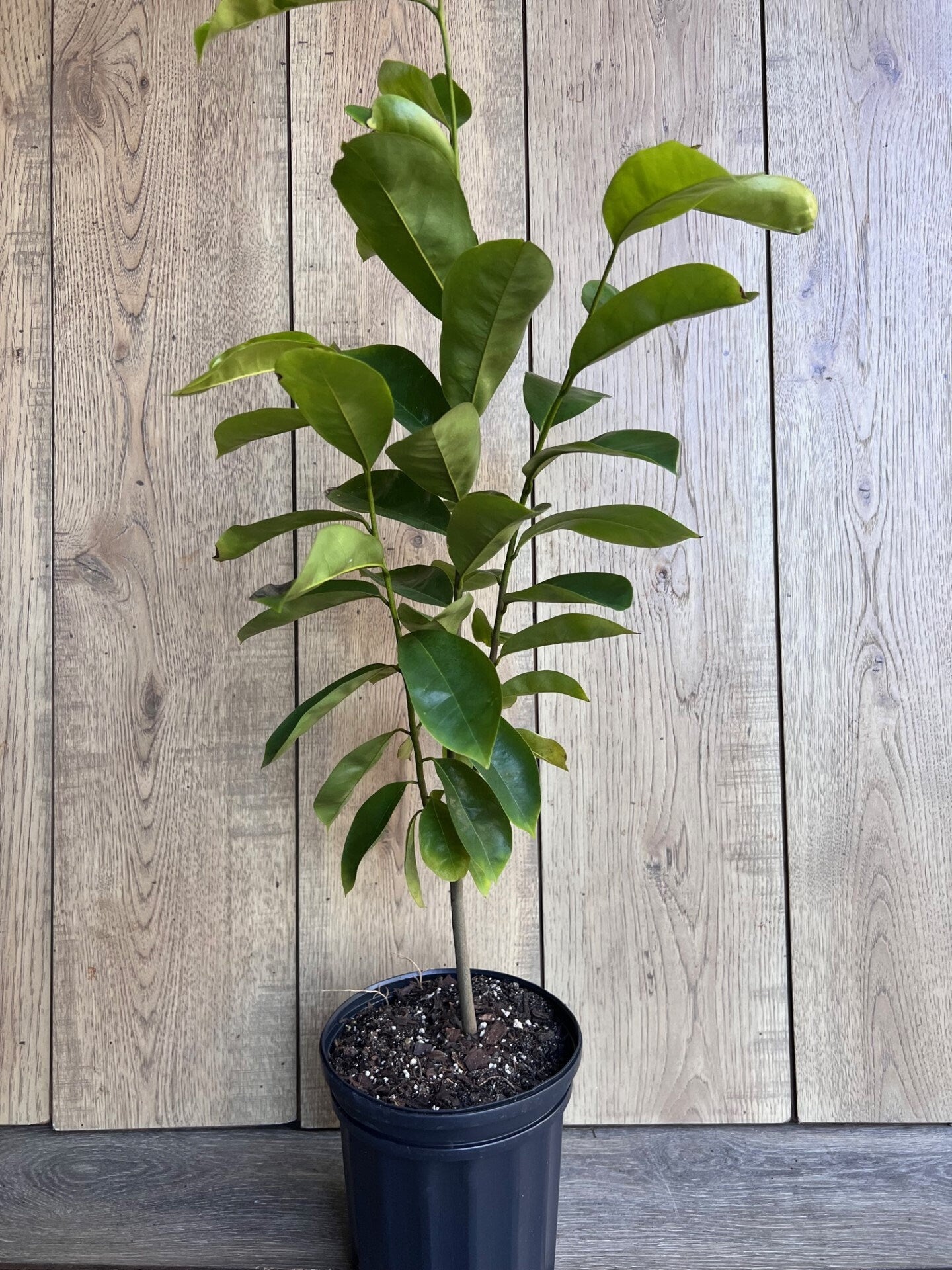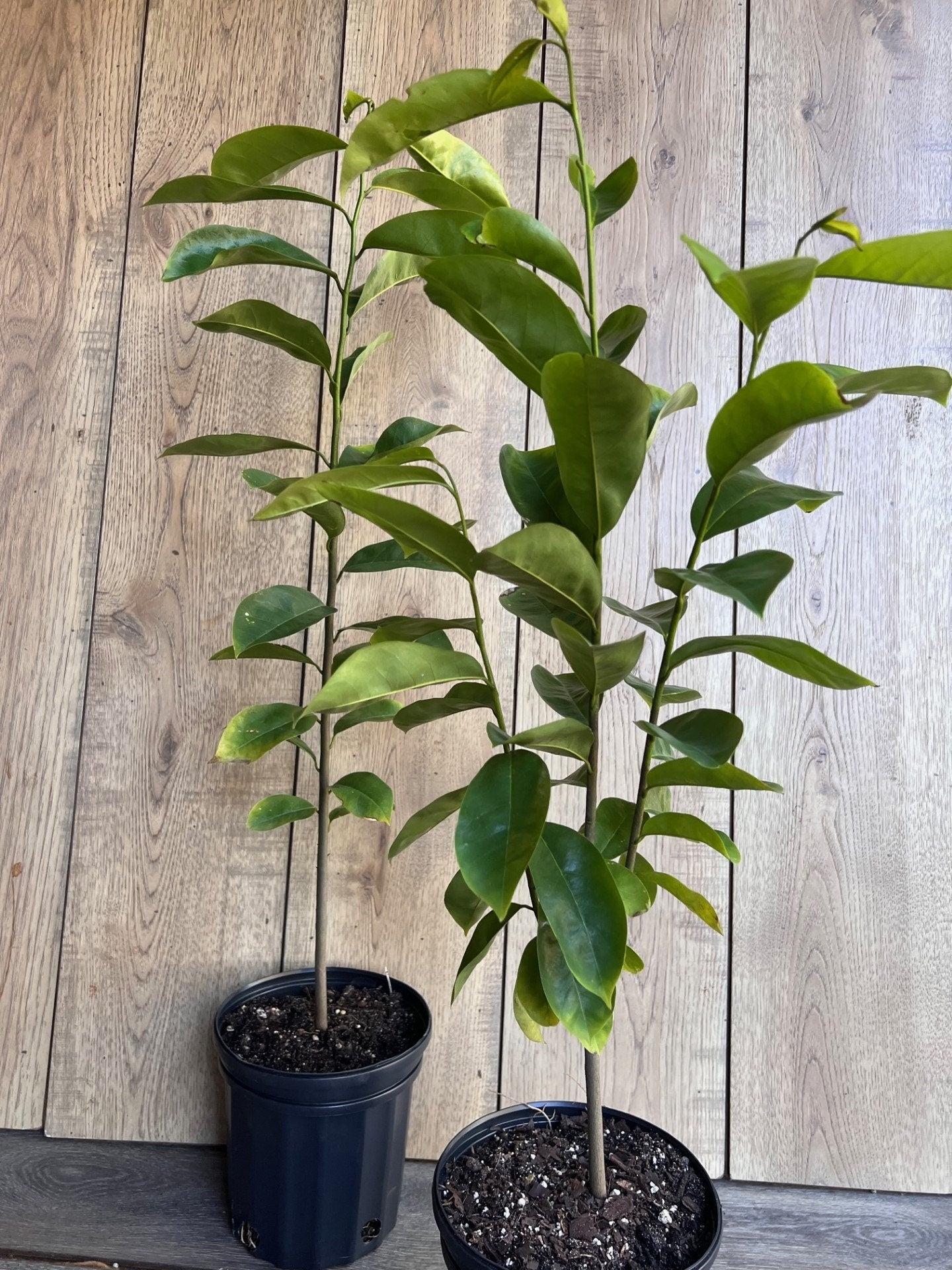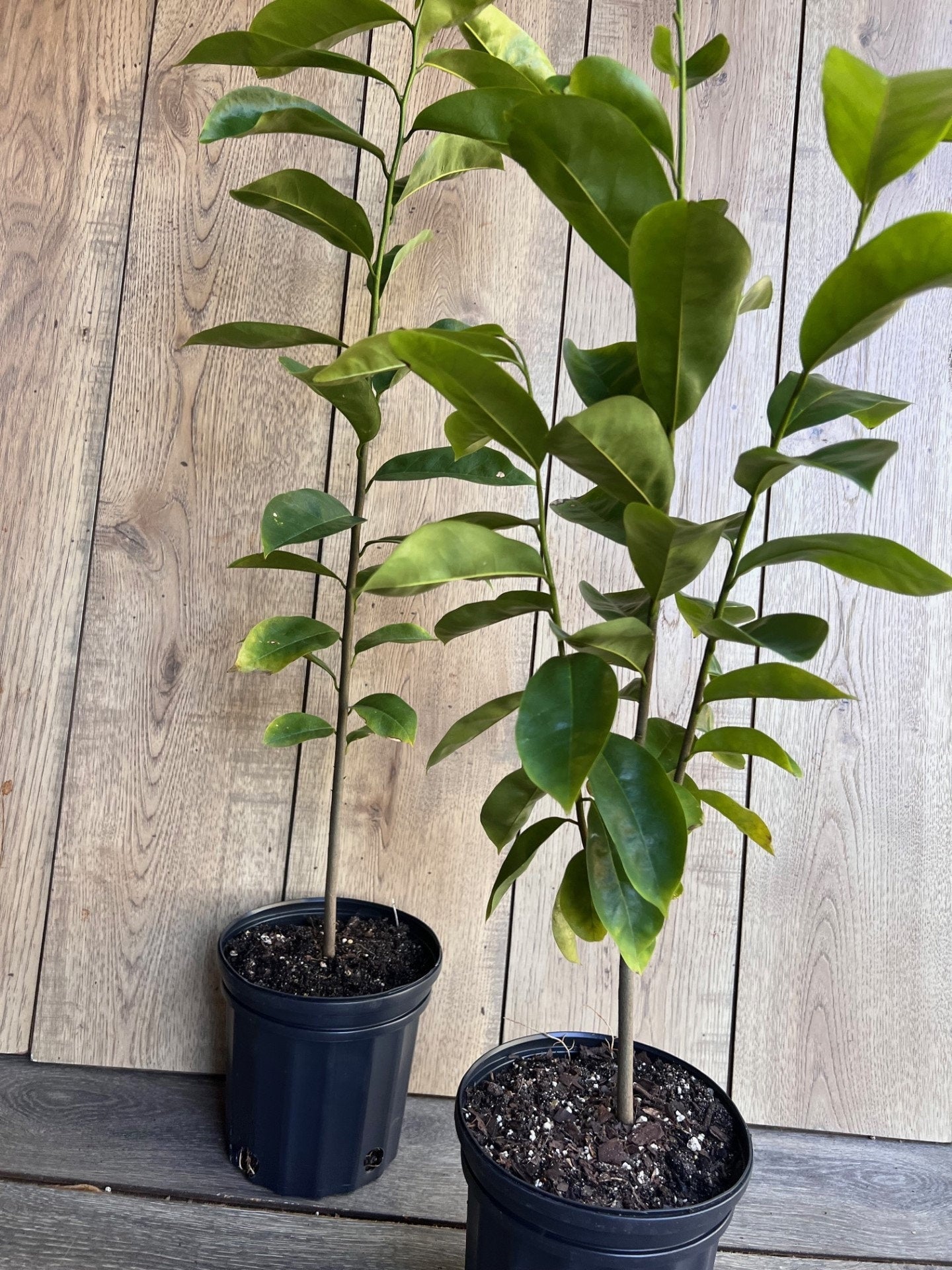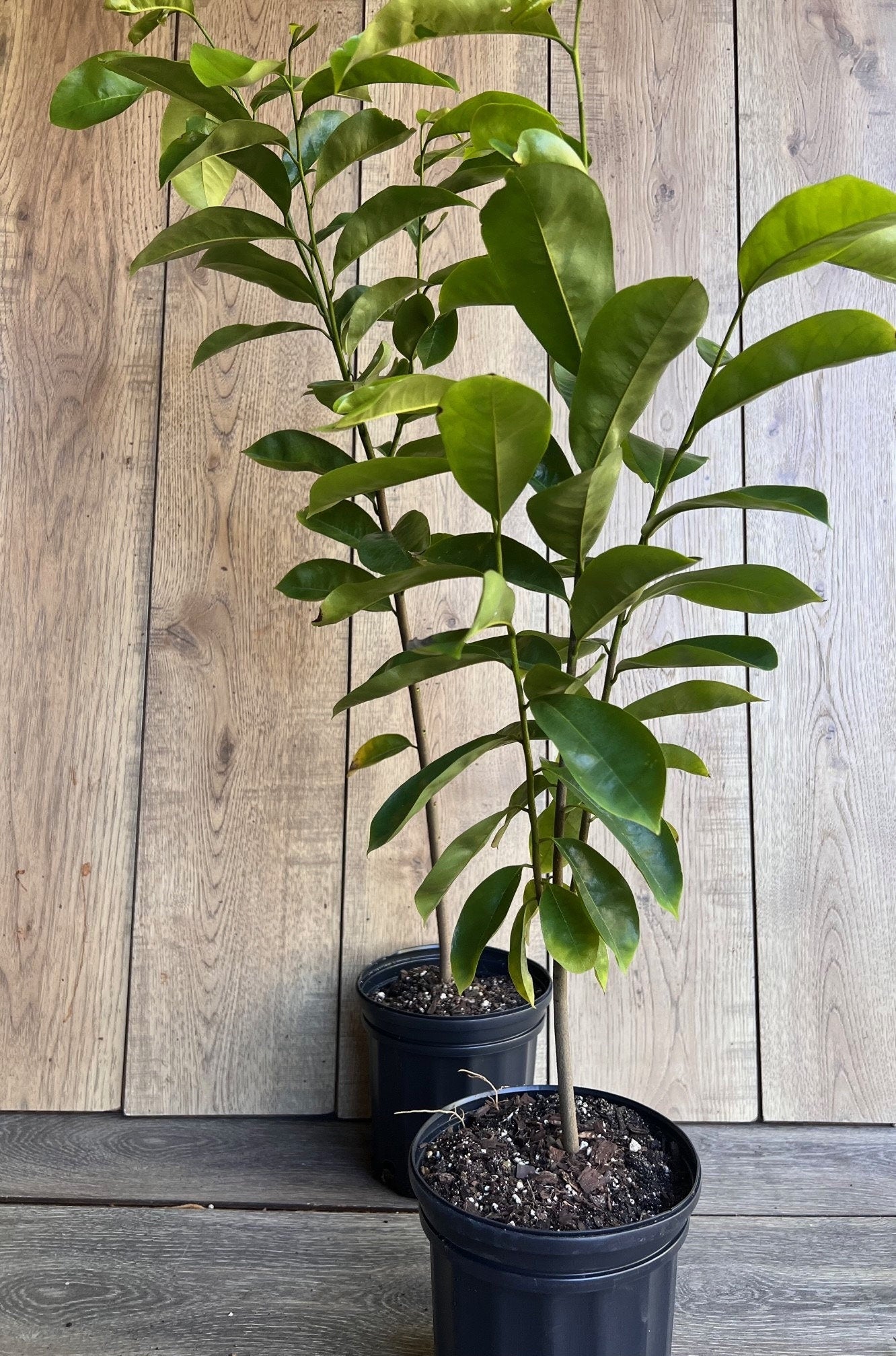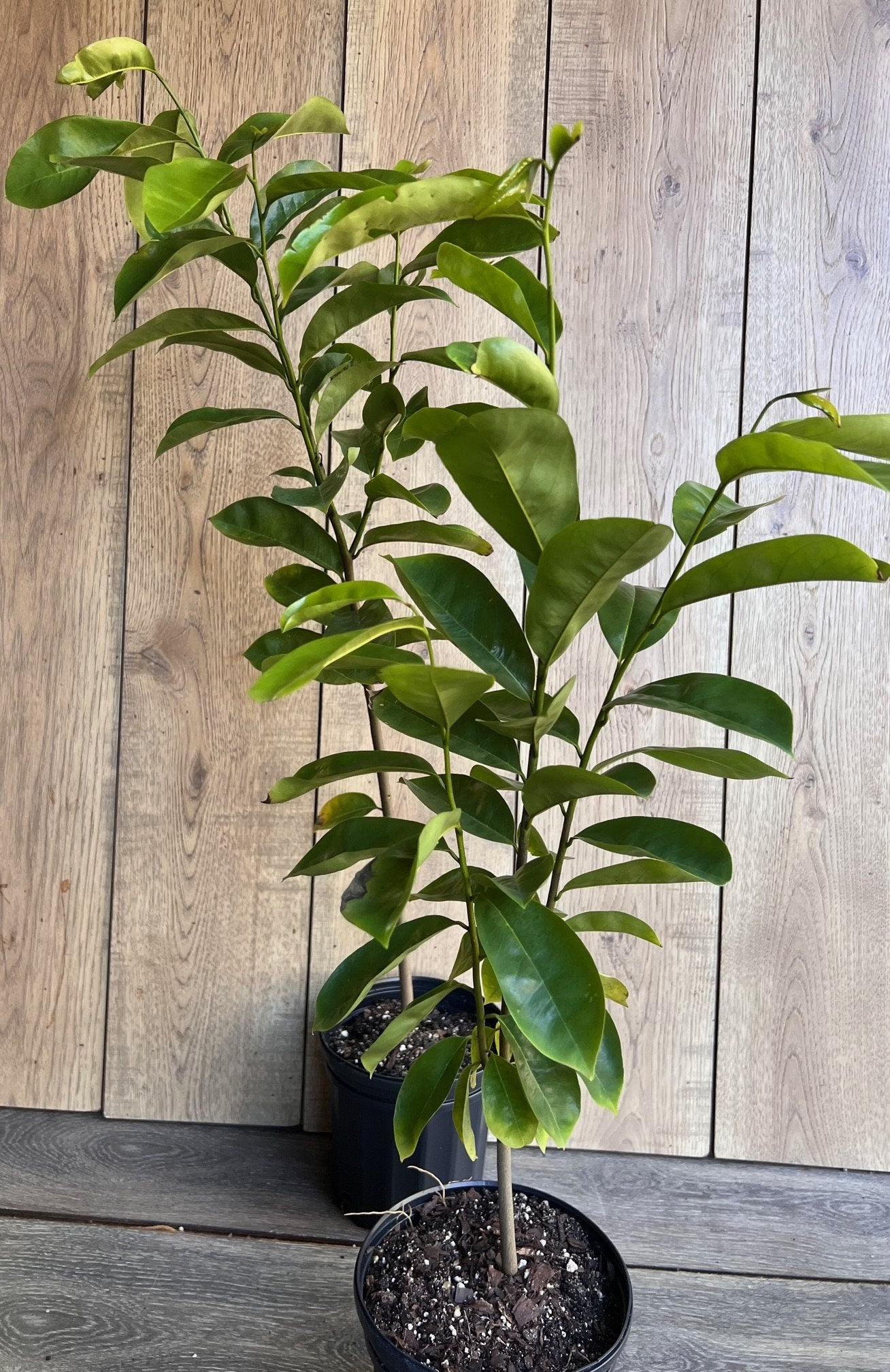Soursop Tree, guanabana in Half gallon pot , Sirsak, Anona Muricata
Soursop Tree, guanabana in Half gallon pot , Sirsak, Anona Muricata
Couldn't load pickup availability
Note: You will receive one Soursop in 1/2 Gal pot similar to the pictures
The Soursop tree (Annona muricata), also known as Graviola, is a tropical evergreen native to Central and South America. It is valued for its large, heart-shaped leaves, fragrant flowers, and spiky green fruit, which has a sweet, tangy flavor. The fruit is commonly used in smoothies, juices, and desserts, and is also believed to offer health benefits, including antioxidant properties. Soursop trees can grow up to 30 feet tall but are often kept smaller in containers or as garden trees. These trees thrive in warm, humid climates and are sensitive to frost, making them ideal for USDA hardiness zones 10-11.
Care Guide for Soursop Tree (Annona muricata)
-
Light
- Full Sun: Soursop trees need at least 6-8 hours of direct sunlight each day for optimal growth and fruit production. Too much shade can reduce fruit yield and quality.
-
Temperature
- Warm Temperatures: The tree thrives in temperatures between 75°F and 85°F (24°C to 29°C). Soursop is frost-sensitive and will not tolerate temperatures below 32°F (0°C). In colder regions, it can be grown in containers and brought indoors during winter.
-
Watering
- Consistent Moisture: Keep the soil consistently moist, especially during the growing and fruiting seasons. Avoid waterlogging by ensuring well-draining soil. Reduce watering during the tree's dormant period in winter.
- Watering Tip: Check the soil moisture by inserting your finger 2 inches below the surface; water when it feels dry.
-
Soil
- Well-Draining Soil: Soursop prefers slightly acidic soil (pH 5.5 to 6.5) that drains well. Sandy loam or a mix with perlite or sand is ideal. Avoid heavy, clay soils that retain too much moisture.
-
Humidity
- High Humidity: Native to tropical regions, soursop trees prefer high humidity. If growing indoors, increase humidity with a humidity tray, occasional misting, or a humidifier. Outdoor trees benefit from regular watering in dry conditions.
-
Fertilizing
- Fertilizer Type: Use a balanced, slow-release fertilizer rich in potassium and magnesium during the growing season (spring to early fall). Organic fertilizers like compost or well-rotted manure are also beneficial. Reduce fertilizing in the winter when the tree is dormant.
-
Pruning
- Pruning for Health and Size: Prune dead or damaged branches to maintain the tree’s shape and improve airflow, which helps reduce disease risk and encourages better fruiting. Regular pruning is essential to control the tree's height, especially if grown in containers.
-
Pollination
- Self-Pollinating: Soursop trees are self-pollinating, meaning one tree can produce fruit on its own. However, having more than one tree nearby can improve fruit yield. Insects, such as bees and flies, aid in pollination.
-
Pests and Diseases
- Pests: Aphids, mealybugs, and scale insects can infest the soursop tree, particularly in humid conditions. Use organic insecticides like neem oil or insecticidal soap to manage pests.
- Diseases: Root rot, fungal infections, and powdery mildew can occur if the tree is overwatered or planted in poorly draining soil. Ensuring good drainage and proper watering practices helps prevent these issues. Leaf spot and blight can also occur, especially in wet conditions.
-
Fruit and Harvesting
- Fruit Production: Soursop trees typically begin producing fruit 3-5 years after planting if grafted, or 5-7 years from seed. The tree produces large, spiky green fruits that ripen over several weeks, turning yellow when ripe.
- Harvesting: The fruit is ready for harvest when it gives slightly to the touch and emits a sweet, tropical fragrance. Cut the fruit from the tree with a sharp knife, leaving a small portion of the stem attached.
-
Container Growing (Optional)
- Growing in Containers: In colder climates, soursop can be grown in large containers with well-draining soil. Ensure the tree gets plenty of sunlight, and move the container indoors or to a sheltered location during the winter months to protect it from frost.
By following these care tips, your Soursop tree can thrive and produce delicious fruit for many years. Whether planted in the ground or in a container, this tropical tree adds beauty and flavor to any garden or home.
Share
